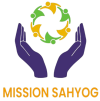What We Do
Our projects
IMPLEMENTATION PLAN
Excepteur sint occaecat cupidatat non proident, sunt in culpa qui officia deserunt mollit anim id est laborum. Sed ut perspiciatis unde omnis iste.
- 1. Needs Assessment: Conduct a comprehensive needs assessment in the community to identify specific requirements for women empowerment and library development. 1
- 2. Stakeholder Engagement: Engage with local stakeholders, community leaders, and potential beneficiaries to gather input and build support for the project.
- 3. Partnerships and Funding: Secure CSR partnerships and funding from various sources to ensure financial stability for the project.
- 4. Team Formation: Assemble a dedicated project team with expertise in women empowerment, education, library science, and community development
- 1. Resource Center Setup: Establish a resource center for women, adolescents, and marginalized groups, equipped with facilities for legal, medical, psychological, and residential support.
- 2. Library Setup: Identify and renovate a suitable space for the community library, ensuring it is accessible and welcoming to all community members.
- 3. Procurement of Resources: Acquire necessary materials, including books, digital resources, training equipment, and furniture for both the resource center and library.
- 1. Skills Training Workshops: Organize and conduct vocational training and skills development workshops for women, focusing on areas with high employability potential.
- 2, Support Services: Provide comprehensive support services through the resource center, including legal aid, medical assistance, psychological counseling, and temporary housing.
- 3. Library Programs: Develop and implement library programs such as reading clubs, cultural events, educational workshops, and digital literacy training.
- 1. Awareness Campaigns: Launch awareness campaigns on women's rights, gender equality, and social justice to educate and engage the community.
- 2. Leadership Programs: Offer leadership development programs for women, empowering them to take active roles in community decision-making.
- 3. Cultural Preservation: Organize events and activities that promote and preserve tribal culture, literature, and heritage.
- 1. Performance Metrics: Establish clear performance metrics to evaluate the success of the project, including participant feedback, employment rates, and community engagement levels. 1.
- 2. Regular Assessments: Conduct regular assessments and surveys to monitor progress and identify areas for improvement
- 3. Reporting and Accountability: Provide regular reports to stakeholders, partners, and funders, ensuring transparency and accountability in all project activities.
- 1. Capacity Building: Train local volunteers and community leaders to sustain and expand project initiatives beyond the initial implementation phase.
- 2. Continuous Improvement: Incorporate feedback and lessons learned into ongoing project activities to enhance effectiveness and impact. 2.
- 3. Future Planning: Develop long-term plans for the growth and expansion of women empowerment and library development initiatives, ensuring sustained community benefits.
